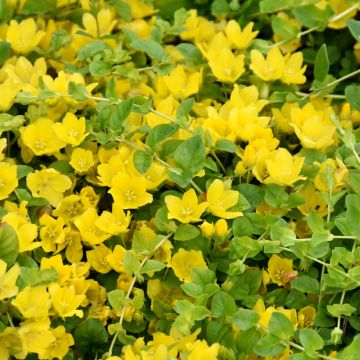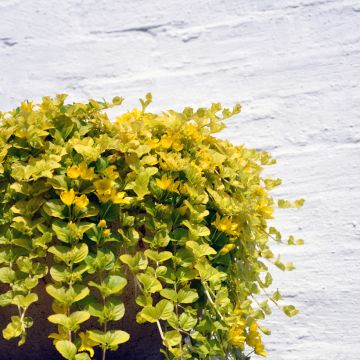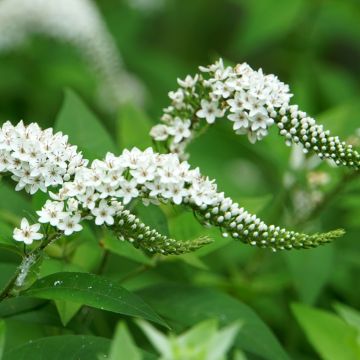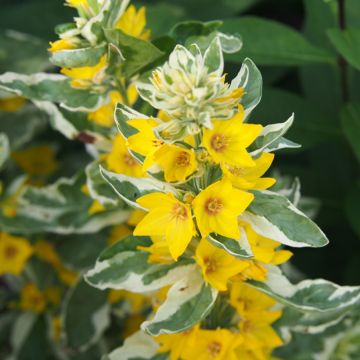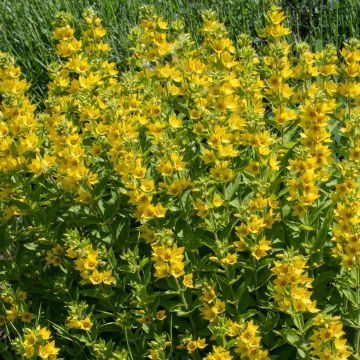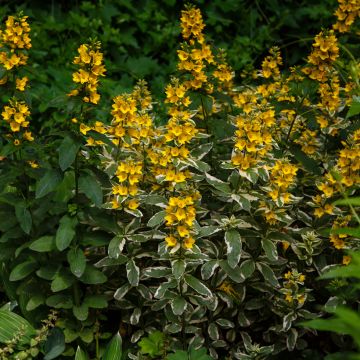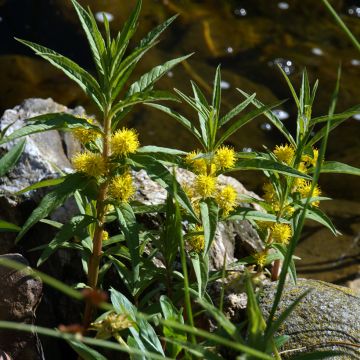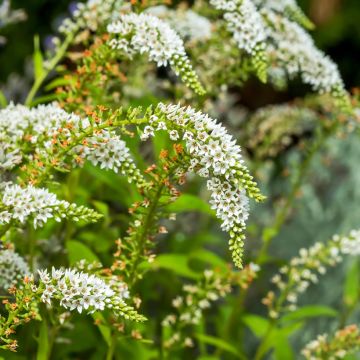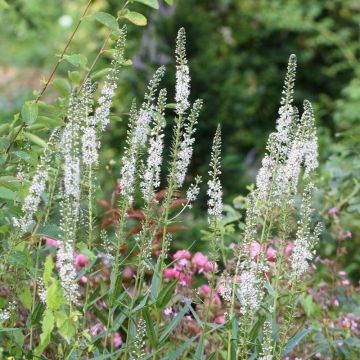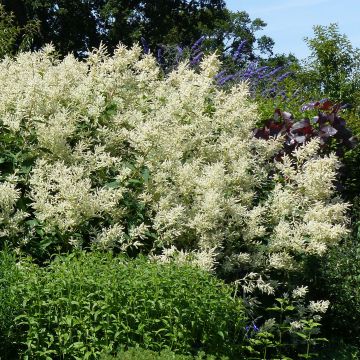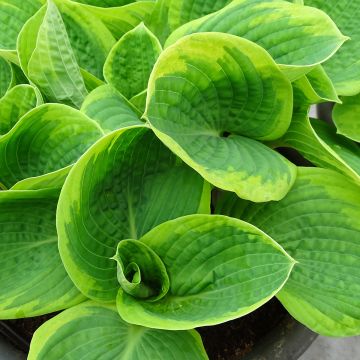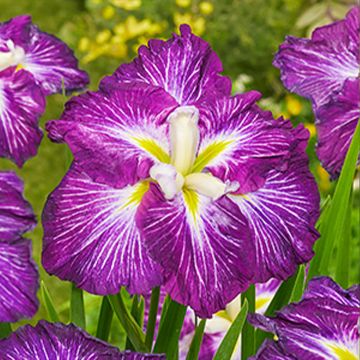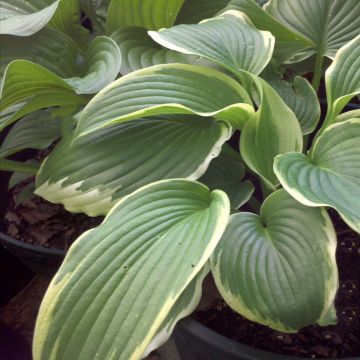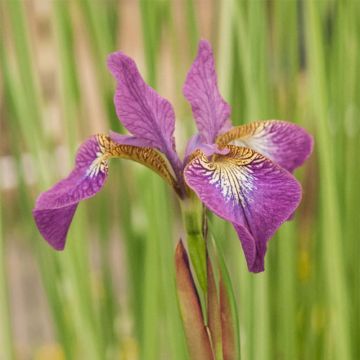

Lysimachia vulgaris - Loosestrife
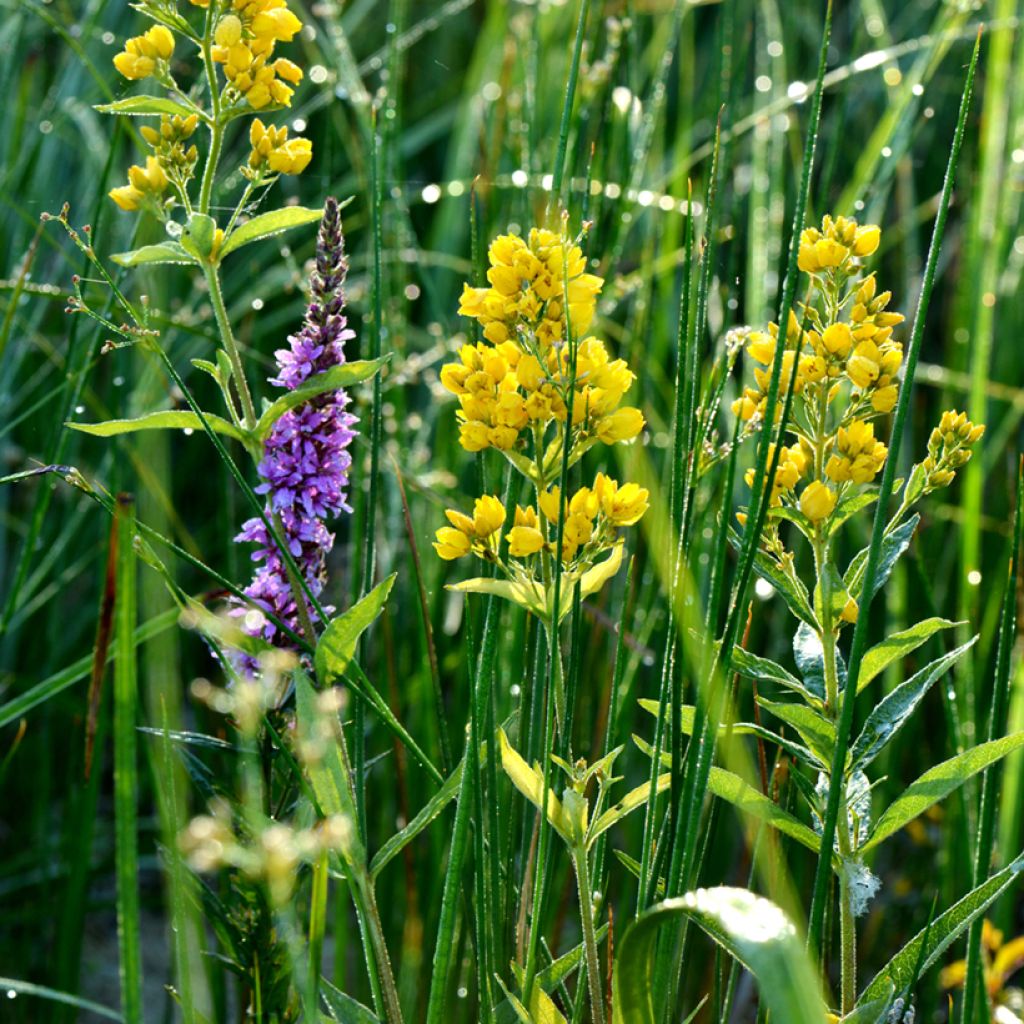

Lysimachia vulgaris - Loosestrife
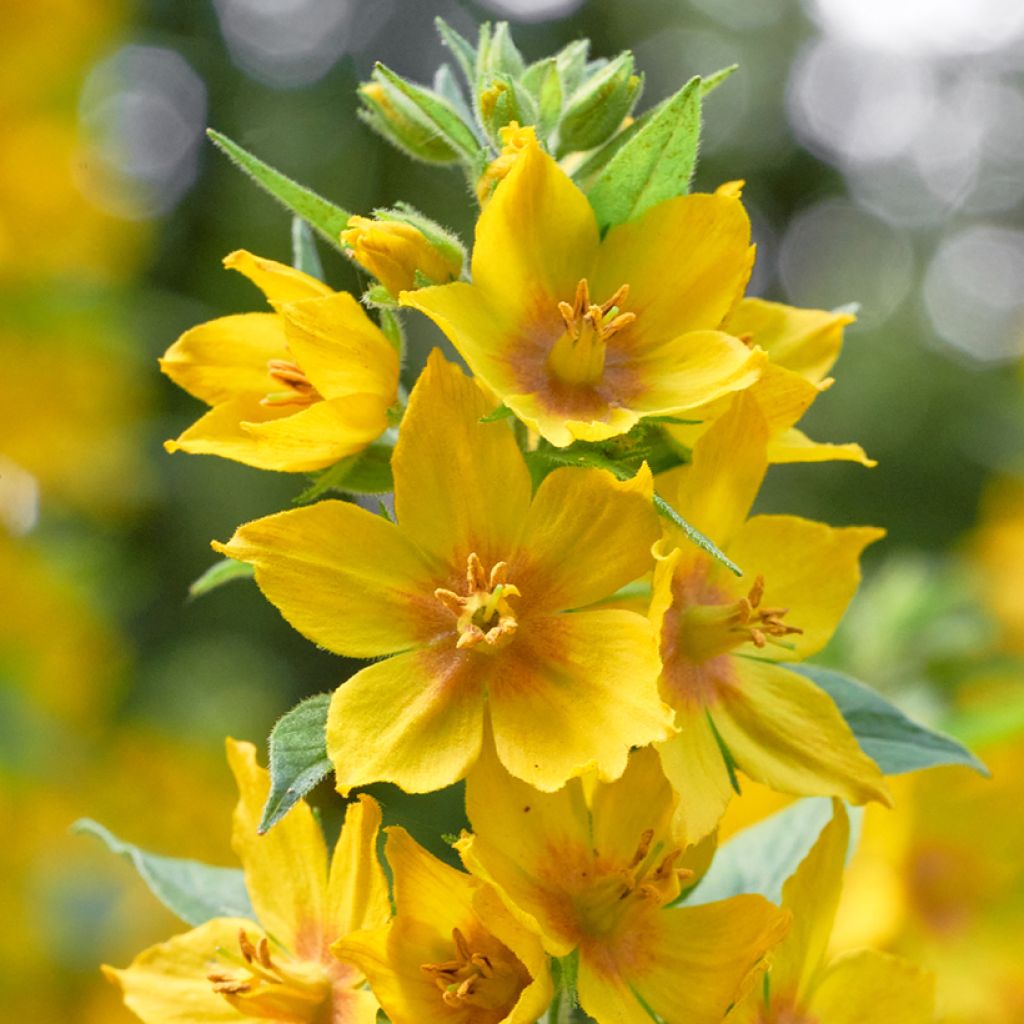

Lysimachia vulgaris - Loosestrife


Lysimachia vulgaris - Loosestrife
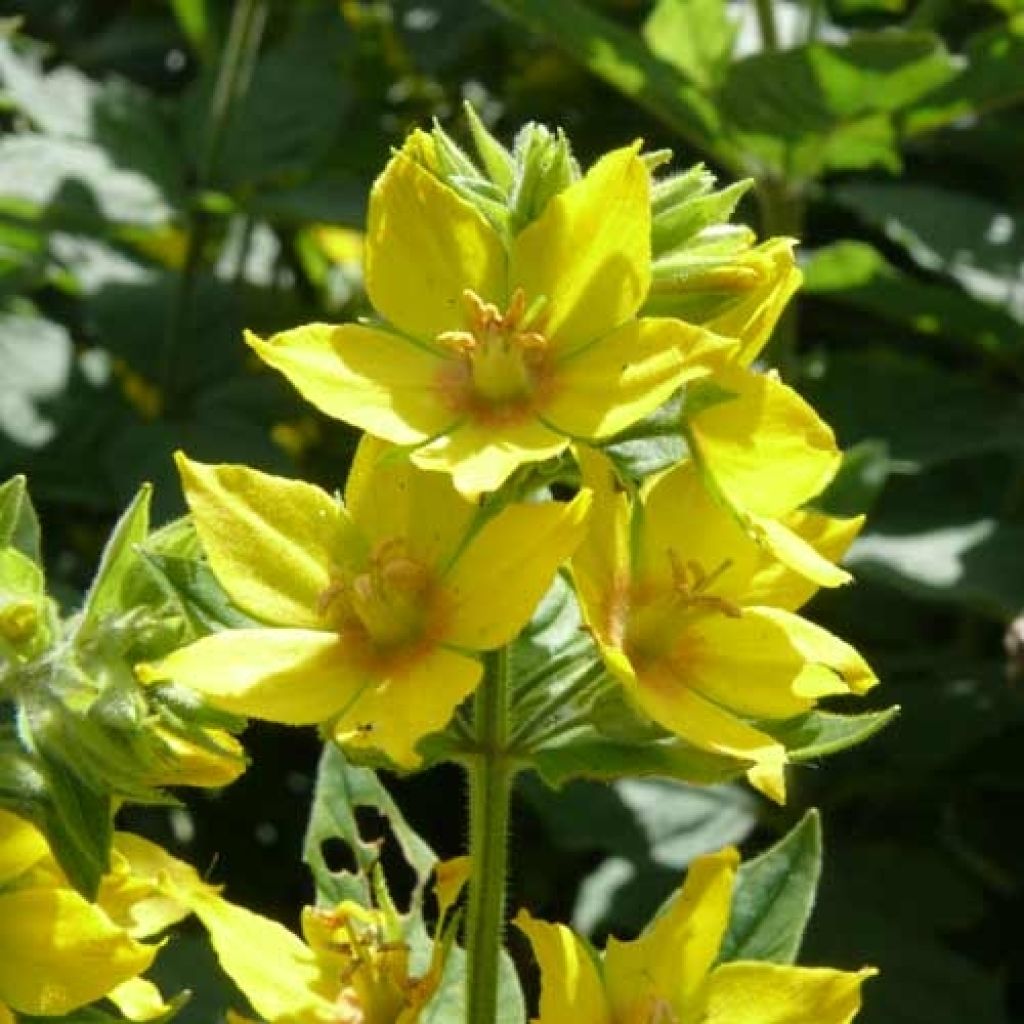

Lysimachia vulgaris - Loosestrife
Lysimachia vulgaris - Loosestrife
Lysimachia vulgaris
Yellow Loosestrife, Common Loosestrife, Garden Loosestrife, Golden Loosestrife, Golden Willowherb
Produced several stems that have bloomed well (especially towards the uppermost part of the plant).
Florence, 17/07/2022
Special offer!
Receive a €20 voucher for any order over €90 (excluding delivery costs, credit notes, and plastic-free options)!
1- Add your favorite plants to your cart.
2- Once you have reached €90, confirm your order (you can even choose the delivery date!).
3- As soon as your order is shipped, you will receive an email containing your voucher code, valid for 3 months (90 days).
Your voucher is unique and can only be used once, for any order with a minimum value of €20, excluding delivery costs.
Can be combined with other current offers, non-divisible and non-refundable.
Home or relay delivery (depending on size and destination)
Schedule delivery date,
and select date in basket
This plant carries a 12 months recovery warranty
More information
We guarantee the quality of our plants for a full growing cycle, and will replace at our expense any plant that fails to recover under normal climatic and planting conditions.

Would this plant suit my garden?
Set up your Plantfit profile →
Description
Lysimachia vulgaris, also known as common loosestrife or yellow loosestrife, is a beautiful perennial plant found in wet and open areas of temperate regions in Eurasia. Its creeping rhizome allows it to quickly colonise the ground where it thrives. From late spring to late summer, the plant forms a beautiful mass of vibrant green vegetation, topped with numerous spikes of yellow flowers. It is perfect for quickly forming a good ground cover. As well as being ornamental, it is also known for its medicinal uses and dyeing properties. This very useful plant grows in moist to marshy areas, but it can be a bit too invasive near a body of water.
Lysimachia vulgaris belongs to the Primulaceae family. Native to lowland areas of Europe and Asia, it has become abundantly naturalised in North America where it is considered invasive in several states. It is a vigorous rhizomatous and stoloniferous perennial, capable of spreading up to 4 to 5m (13 to 16ft) in all directions, at least. Its above-ground vegetation is deciduous in winter, emerging from the ground in spring and drying up at the end of the season. From its long underground, aerial, or aquatic stems, new upright stems emerge every spring, reaching an average height of 75cm (30in). These stems bear large, slightly hairy, lanceolate, almost petioleless bright green leaves. Flowering occurs from May to September, depending on the climate. Pyramid-shaped inflorescences form at the end of the leafy stems, bearing small clusters of bright yellow flowers. Each flower, carried on a long pedicel, has a small tubular base that widens into 5 lobes and measures 2 to 3cm (1in) in diameter. This plant can become quite invasive in heavy, wet soils.
Common loosestrife thrives in sunny or semi-shaded exposures, particularly in clayey and waterlogged soils, which are slightly acidic to limestone. It will be easier to contain and highly appreciated for its beauty in a bed where the soil remains consistently moist throughout the year. It is especially suitable for the banks of large natural ponds. In this context, it can be associated with resistant plants that it won't smother: horsetails, purple loosestrife, rushes, persicarias, and meadowsweet, for example. Together, these plants will form a natural area beneficial for biodiversity.
Common loosestrife has long been known for its medicinal properties: its leaves were traditionally used to treat wounds and bruises. Our ancestors also used it for combating internal or external ulcers, and intestinal disorders.
The flowers contain a yellow pigment used for dyeing wool.
Report an error about the product description
Lysimachia vulgaris - Loosestrife in pictures


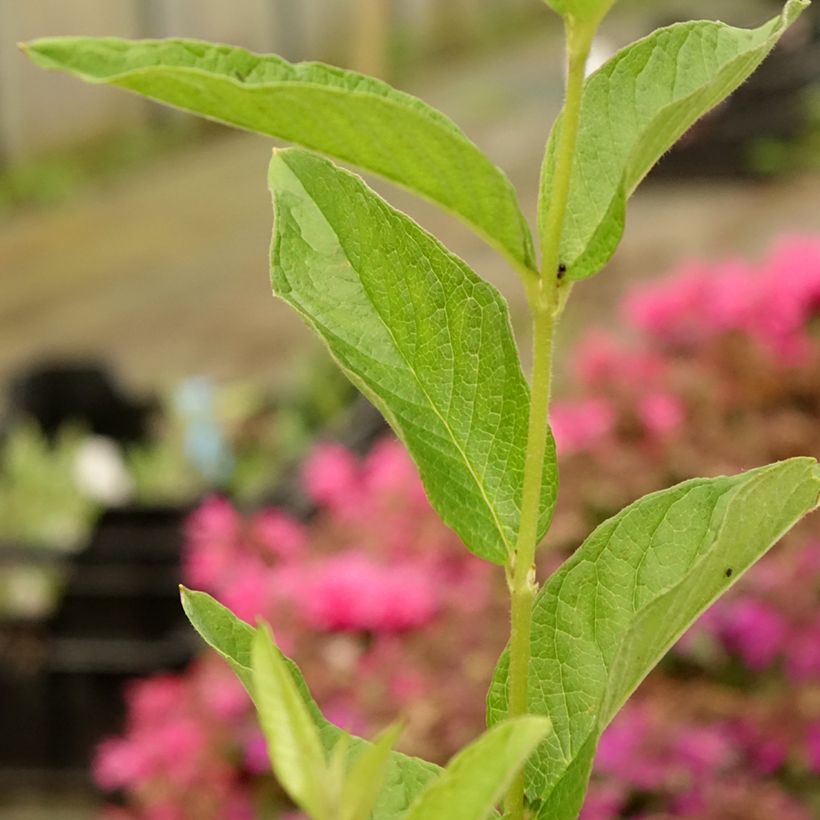

Flowering
Foliage
Plant habit
Botanical data
Lysimachia
vulgaris
Primulaceae- Myrsinaceae
Yellow Loosestrife, Common Loosestrife, Garden Loosestrife, Golden Loosestrife, Golden Willowherb
Western Europe
Other Lysimachia
View all →Planting and care
Lysimachia vulgaris prefers rich, clayey, moist to wet soils. It prefers limestone soils (or at least not too acidic). It likes a sunny to semi-shaded exposure. This perennial tolerates soil that remains consistently moist throughout the year, where it will be less invasive and easier to control. Remarkably hardy and robust, it may take a little longer to establish, but becomes conquering in marshy lands. This young plant requires no particular maintenance, but it is sometimes necessary to control its growth by removing the stems that exceed the space we want to allocate to it.
Planting period
Intended location
Care
-
, onOrder confirmed
Reply from on Promesse de fleurs
Similar products
Haven't found what you were looking for?
Hardiness is the lowest winter temperature a plant can endure without suffering serious damage or even dying. However, hardiness is affected by location (a sheltered area, such as a patio), protection (winter cover) and soil type (hardiness is improved by well-drained soil).

Photo Sharing Terms & Conditions
In order to encourage gardeners to interact and share their experiences, Promesse de fleurs offers various media enabling content to be uploaded onto its Site - in particular via the ‘Photo sharing’ module.
The User agrees to refrain from:
- Posting any content that is illegal, prejudicial, insulting, racist, inciteful to hatred, revisionist, contrary to public decency, that infringes on privacy or on the privacy rights of third parties, in particular the publicity rights of persons and goods, intellectual property rights, or the right to privacy.
- Submitting content on behalf of a third party;
- Impersonate the identity of a third party and/or publish any personal information about a third party;
In general, the User undertakes to refrain from any unethical behaviour.
All Content (in particular text, comments, files, images, photos, videos, creative works, etc.), which may be subject to property or intellectual property rights, image or other private rights, shall remain the property of the User, subject to the limited rights granted by the terms of the licence granted by Promesse de fleurs as stated below. Users are at liberty to publish or not to publish such Content on the Site, notably via the ‘Photo Sharing’ facility, and accept that this Content shall be made public and freely accessible, notably on the Internet.
Users further acknowledge, undertake to have ,and guarantee that they hold all necessary rights and permissions to publish such material on the Site, in particular with regard to the legislation in force pertaining to any privacy, property, intellectual property, image, or contractual rights, or rights of any other nature. By publishing such Content on the Site, Users acknowledge accepting full liability as publishers of the Content within the meaning of the law, and grant Promesse de fleurs, free of charge, an inclusive, worldwide licence for the said Content for the entire duration of its publication, including all reproduction, representation, up/downloading, displaying, performing, transmission, and storage rights.
Users also grant permission for their name to be linked to the Content and accept that this link may not always be made available.
By engaging in posting material, Users consent to their Content becoming automatically accessible on the Internet, in particular on other sites and/or blogs and/or web pages of the Promesse de fleurs site, including in particular social pages and the Promesse de fleurs catalogue.
Users may secure the removal of entrusted content free of charge by issuing a simple request via our contact form.
The flowering period indicated on our website applies to countries and regions located in USDA zone 8 (France, the United Kingdom, Ireland, the Netherlands, etc.)
It will vary according to where you live:
- In zones 9 to 10 (Italy, Spain, Greece, etc.), flowering will occur about 2 to 4 weeks earlier.
- In zones 6 to 7 (Germany, Poland, Slovenia, and lower mountainous regions), flowering will be delayed by 2 to 3 weeks.
- In zone 5 (Central Europe, Scandinavia), blooming will be delayed by 3 to 5 weeks.
In temperate climates, pruning of spring-flowering shrubs (forsythia, spireas, etc.) should be done just after flowering.
Pruning of summer-flowering shrubs (Indian Lilac, Perovskia, etc.) can be done in winter or spring.
In cold regions as well as with frost-sensitive plants, avoid pruning too early when severe frosts may still occur.
The planting period indicated on our website applies to countries and regions located in USDA zone 8 (France, United Kingdom, Ireland, Netherlands).
It will vary according to where you live:
- In Mediterranean zones (Marseille, Madrid, Milan, etc.), autumn and winter are the best planting periods.
- In continental zones (Strasbourg, Munich, Vienna, etc.), delay planting by 2 to 3 weeks in spring and bring it forward by 2 to 4 weeks in autumn.
- In mountainous regions (the Alps, Pyrenees, Carpathians, etc.), it is best to plant in late spring (May-June) or late summer (August-September).
The harvesting period indicated on our website applies to countries and regions in USDA zone 8 (France, England, Ireland, the Netherlands).
In colder areas (Scandinavia, Poland, Austria...) fruit and vegetable harvests are likely to be delayed by 3-4 weeks.
In warmer areas (Italy, Spain, Greece, etc.), harvesting will probably take place earlier, depending on weather conditions.
The sowing periods indicated on our website apply to countries and regions within USDA Zone 8 (France, UK, Ireland, Netherlands).
In colder areas (Scandinavia, Poland, Austria...), delay any outdoor sowing by 3-4 weeks, or sow under glass.
In warmer climes (Italy, Spain, Greece, etc.), bring outdoor sowing forward by a few weeks.






























